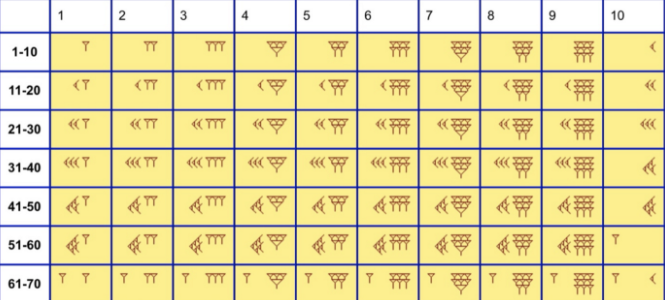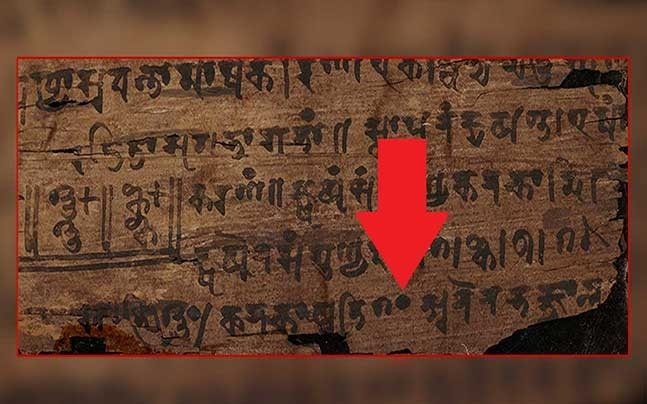The word, “nothing”, in the universe of mathematics has had a change of meanings as centuries have passed. This word was compared to the “Zero” we know of today. The difference between the old times and now is that zero has a numerical value now, it is no more the absence of a value.
Obvious Absurdity
The value given to zero was quite obvious, well that is what we would think. But it took centuries for the world to understand the concept and give it a numerical value. It was common sense, people would say if you look back to those centuries. Well yes, but try to look at the anomaly, zero has been looked at for years like something that doesn’t have value, to denote absence.

It is easy to understand by this correlation: Zero is to numbers what black is to color. As black is the absence of color, zero is found to be the absence of numerical value. Not being entirely true, since at the end of the day black is undeniably a color.
Zero in Early Ages
Mesopotamia, one of the first few civilizations we know of, has the earliest reference as well as likeness to what we now know as “zero”. Archeologists were lucky enough to decipher the numerical system of the Babylonians using some artifacts. This numerical system is what they used approximately 4000 years ago.
The Babylonian numerical system was very efficient even though its efficiency cannot be compared to the refined numerical system the world has now. This system was very efficient for record-keeping, as long as time is considered. But when we talk about this system being used by merchants at the time, the problem arises.

The Problem with the Babylonian System
Zero or the absence of value was denoted by two wedge marks in the column which represented a lack of value. For example, 304 is denoted with a double wedge mark in the ten’s column. This was used to tell the difference between ‘304’ and ’34’. The point to be understood here is that the double wedge mark was not provided a numerical value, rather it was just the Babylonian way of representing ‘N/A’.
Although in the above example, the symbol of the double wedge marks does the same function that a numerical zero would do but there is a difference in other cases. The system is easy to put up with as long as the numbers are up to 10 or 100.
The dearth or shortfall of giving “zero”, a numerical value creates a problem when large numbers are concerned. The smaller values are not very hard to decipher.
As stated above, the Babylonian merchants seemed to work fine with the existing number system only because they had to deal with a smaller number of people then, not millions or billions like today. Also, the problems and shortcomings of this system seem more profound, rather obvious when dealing with very large quantities. Come to think of the infinite property of numbers, and numerous other issues, this system still had a lot to evolve into.
To sum up all the issues, it can be said that the pre-existing system was insufficient when advancements started taking place. Numbers 1, 10, and 100 only have the difference of zeroes between them, it would be a much difficult task to go to higher numbers with such anomalies. The Babylonian system as efficient as long as daily needs and small transactions were concerned.
But as technology, science, and society progressed and Mathematics became the epicenter of development, there was a need of quantifying everything. Even “zero” that previously was only the absence of a numerical value had to be quantified.
Indian Development
The invention of zero was a very important discovery in the history of the world. The origin of the concept zero is highly debatable, since many claims that origin is Mesopotamian, Chinese, or Mayan culture. But the highest chances are of India being the birthplace of Zero.
‘Bakhshali Manuscript’ which dates back to 7th Century AD is the very first writer to include the numerical zero. It was found to be written on bark and birch. The dots found under the numbers were considered the first appearance of a number resembling zero. On further research, the archaeologists found out that the ‘dots’ found under the numbers, in comparison to the Mesopotamian System were not “lack of values” rather they had a numerical value of their own.

“The mathematical zero may have arisen from contemporaneous philosophy of emptiness, or Shunyata”, said Peter Gobets (Secretary of the Zero project).
The above stated Shunyata philosophy is a core concept of Buddhism, which was converted into a Mathematical concept by the Indian Mathematician, Brahmagupta. This can be considered viable, and truthful information taking into consideration India’s history of Mathematics. The fact to be understood here is, that Brahmagupta defined zero approximately 500 years after the Bakhshali Manuscript was written. Therefore, we can understand that while Brahmagupta was the first to define zero, he cannot be given credit to discovering the principle behind the zero we know today.
European Reluctance
“The history of liberty is a history of resistance”, a famous quote by Woodrow Wilson.
The church and science have always had a bad history, the discovery of Zero was no different. When this concept was first proposed to Europeans by the Moorish conquest and no matter how obvious the need for this concept was, there was the antithesis.
Antithesis, but not scientific. The idea of Zero spread like wildfire throughout Europe, and as expected, there was a religious push back.
“God was in everything that WAS. Everything that was NOT was of the devil.”, this saying is what religious leaders believed in.
As ridiculous as it is, to relate mathematics to God, the people believed the “nothing” was “empty of God” and therefore was of the Devil. Soon this religious issue took a racial turn. There was a ban on the use of Arabic Numerals by Florence in 1299, forcing people to use an outdated and inefficient numerical system that didn’t have a zero. This came as a result of the dislike for Arabs and Hindus that had been going on for years.
It wasn’t until 1600, that the usage of Arabic Numerals superseded the use of Roman Numerals. Come to think of it now, what all could have been done in 3 centuries had they let people use zeroes in time. We’d probably be 3 centuries ahead of our time in technological advancements, looking in hindsight to the last 50 years.
Breakthrough
All in all, the crucial role that zeroes played in all those years of technological advancements, and the vital role it plays in our daily lives cannot be understated. Zero is to Mathematics, what Light is to Physics. It has multiple roles to play, it acts as a placeholder for empty values but is its number as well. Zero is also the point where the negatives and the positives culminate.
The largest and the most useful part of all is how Zero changed the world for the better. It made it easy for the common folk to do calculations. The growth of the Arabic Number System was catalyzed by this essential addition.
Abstract as it may sound, there is never nothingness in the real world. Even an absence of something has value. This paradox created a path to the destination where the world discovered zero. Nothingness has been a concept in our minds forever, yet something held the world back for so many years from discovering and quantifying.
Everyone in the world needs to act on their instincts rather than letting something, someone or your fears hold you down, this is the true path of achieving greatness.
